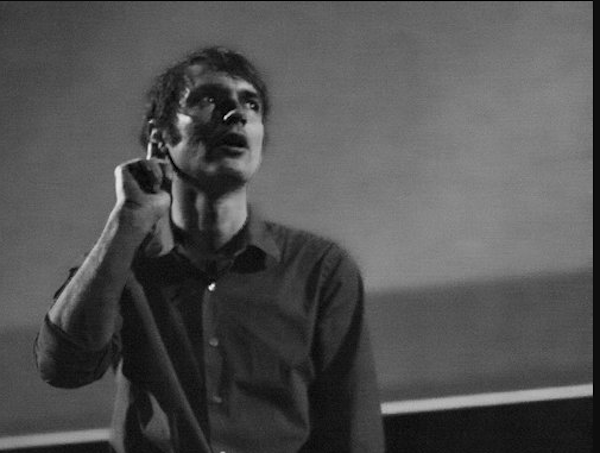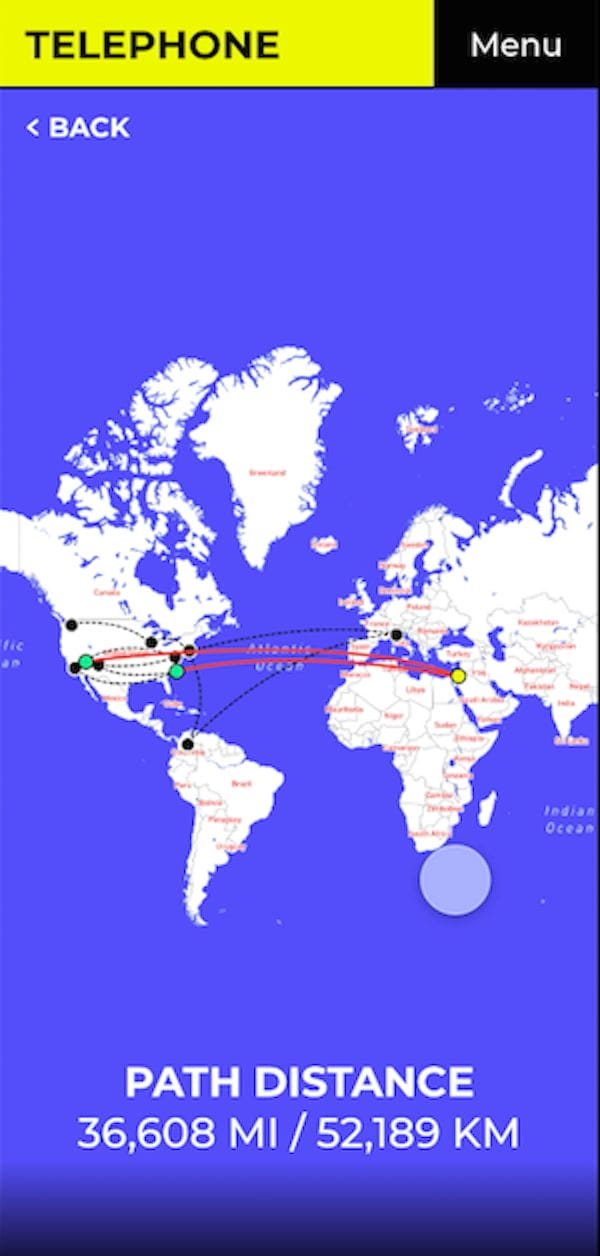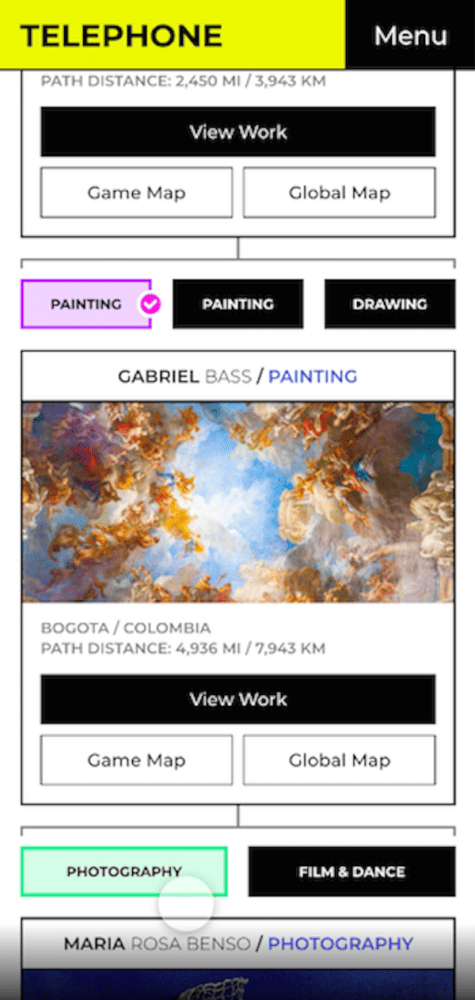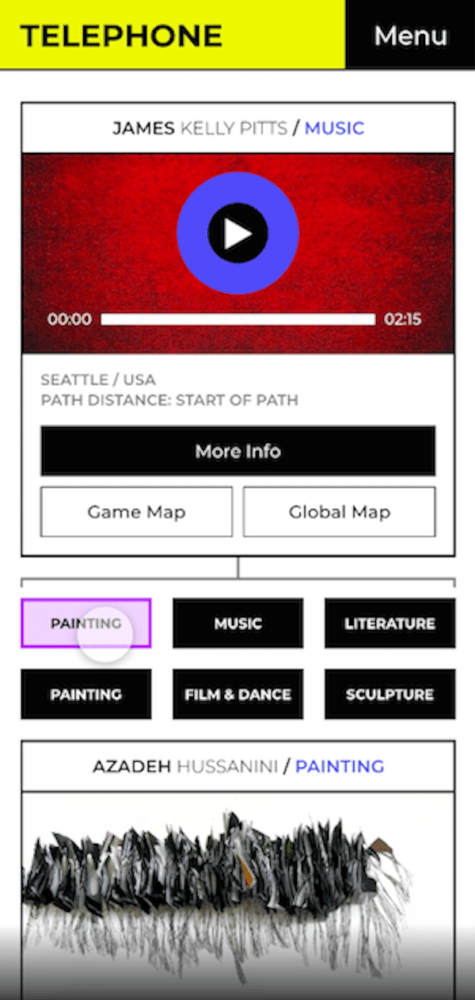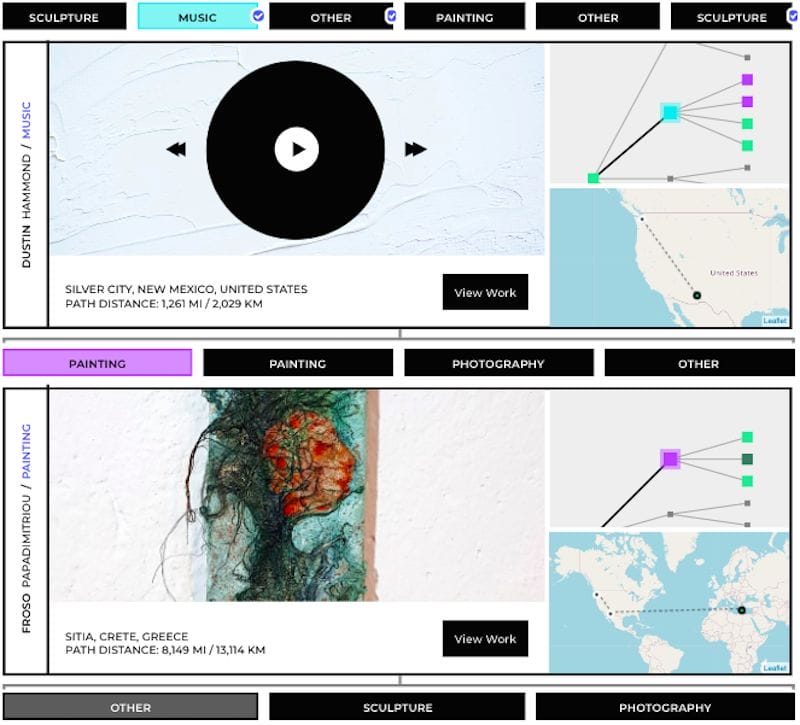The Telephone Experiment, an expansive re-creation of the children’s messaging game — global in scope and with multidisciplinary artistic participation—caught our eye as an intriguing artistic expression in the midst of the pandemic.
In researching this project, we found artist and web designer Nathan Langston and his explanations of how Telephone Experiment came to be. On his website we were surprised to discover the experiment originally started in 2010 as an expression of Langston’s loneliness. He writes, “I sat out on a friend’s fire escape with a glass of wine and, as sirens passed below, remembered a prayer ‘Oh God, Thy Sea is So Great and My Boat is So Small.’ I wrote out the message for a painter. Then I took her physical painting across town (carefully) on the subway and set it down in front of a poet. Then I handed that poem to a photographer, who kept it wrinkled up in his pocket until inspiration struck in a southwestern desert of the United States. That photograph was delivered to a writer at Columbia University and his story went to a sculptor, who made her ghostly work in a dirt pit. A musician then translated her sculpture into an hour-long work of ambient music. The process took forever but at least I was feeling less lonely.”
Although the initial project ended after eight works of art, Langston digitally relaunched the Telephone Experiment in 2015 to a significantly larger pool of participants. We also learn on Langston’s website that he believes transitioning the experiment online opened new gateways of artistic expression. “It also gave us the ability to display all forms - music, video, photos and other types of digital content - for example, one of the works turned out to be a 3D rendered video game with a full soundscape”.
Now in 2020, Langston has relaunched the experiment for a third time. Seeming to bear his soul to us and what the Telephone Experiment means to him on the deepest level, Langston says that he revels in feeling like he is part of a collective. “I find comfort in thinking that we’re all working on the same project in our own little ways. All of us, from Rumi to Michelangelo to Janis Joplin to the vast number unknown and under-celebrated artists, are right here in my kitchen, sharing a glass of wine, trying to figure out something vital and lasting.”
Here, Picture This Post (PTP) talks to Nathan Langston (NL) in more detail about the concept of the Telephone Experiment, how the project evolved into an exhibit the midst of the global pandemic and the intellectual concepts that drive his work.
(PTP) Can you please share with our readers what the Telephone Experiment is and how it works?
(NL) The Telephone Experiment is just like the kids’ game. A message is whispered from one person to another and changes as it is passed. But we whisper a message from art form to art form. So, a message could become a painting, then music, then poetry, then dance.
The idea of using a game like this to explore art and communication has been around since at least Andre Breton and the Surrealists were playing their games of Exquisite Corpse.
But they stole it too! The game has existed at least since the 18thcentury as a European parlor game called Consequences. But most likely it existed long before that. And it’s universal, known as Stille Post, Gutchy Telefon, Dengon, Telefono Descompuesto, and many other names the world-over.
We also whisper each finished work of art to multiple artists so the game branches out exponentially. Halfway through the game, we reverse that process. We start assigning multiple artworks to a single artist. We ask each artist to find what the works have in common and to create a translation of that into their own art form.
This Telephone Experiment begins with one message, passes that message through hundreds and hundreds of artists from 492 cities in 70 countries and then concludes with a single artwork.
(Editor’s Note: Exquisite Corpse is a game in which a participant adds words or a drawing to a piece of paper and folds it to conceal their contribution before passing it along.)
How has this project been re-shaped by the pandemic?
This most recent Telephone Experiment project is very much a direct response to the pandemic. Started in March 2020 when things began to get bad in the States, we found ourselves totally isolated and alone. Aside from not requiring physical contact, being inexpensive to host, and easy to explain, the project directly connects artists, strangers from across the planet, in a very intimate way. Many participants have reported a powerful response, often receiving a prompt in a moment of despair and artistic stagnation. I think for a large percentage of our artists, playing has felt deeply restorative.
How has the Telephone Experiment functioned for you as an intellectual experiment?
There is an ancient Greek term for the translation of one art form into another. They called it ekphrasis. The Greeks used ekphrasis to mean the process of translating a visual work of art into a linguistic one. But, in actuality, any form of art can give voice to any other form of art. Poetry can describe a dance. Dance can speak out on behalf of a play. A play can translate a painting. And a painting can read a poem to the eyes.
Synthesis is when you merge and combine things together. In the second half of the game, we assigned each artist multiple works of art to synthesize and translate. This is important because, in the real world, an artist isn’t just influenced by a single preceding artist. They’re influenced simultaneously by Rothko and Rembrandt, while listening to David Bowie as they paint. Artists synthesize a multitude of influences.
What are the unique challenges and serendipities of communicating with artists in over 70 countries for this project?
Most of the written works and the lyrics were all in English. That makes things easy but drastically reduces our pool of participating artists. We also failed at getting much engagement from artists in Africa, some parts of Asia, and some parts of South America. Part of the problem may be that message boards we used to spread the word didn’t reach those places, especially in English. It could be that internet is not readily available in certain regions. Another challenge was that we accepted artists from every country and were sometimes uncertain about their political safety or what we should include in our emails to them.
But the serendipities have been otherworldly. Helping facilitate meaningful connections between artists from vastly different countries and cultures has been staggeringly beautiful. We’ve shown that, although the internet is usually a mile wide and an inch deep, it can also be mile wide and a mile deep.
I hope that visitors will know that, during one of the most abominable, impossibly bleak years of our lives, these artists, strangers to one another, came together to create something of astonishing beauty. I hope that visitors will see that what we have done is practically impossible and brimming with hope.
For more information about the exhibit visit the Telephone Experiment website
Nominate this for The Picture This Post BEST OF 2021???
Click Readers' Choice
Want to see who won the Picture This Post READERS’ CHOICE competition last year?
WATCH THIS SHORT VIDEO—
Photos courtesy of Nathan Langston



